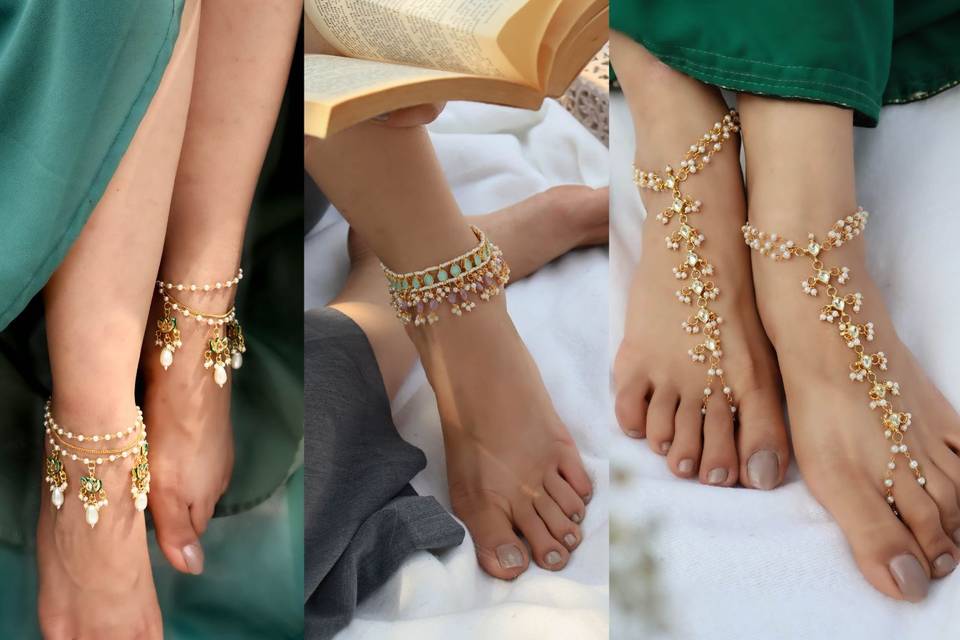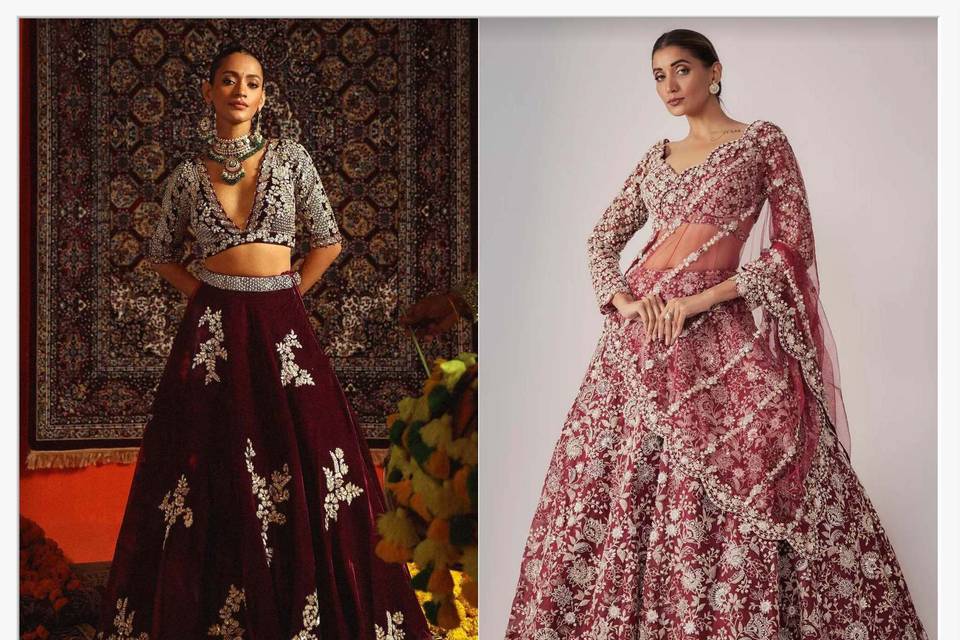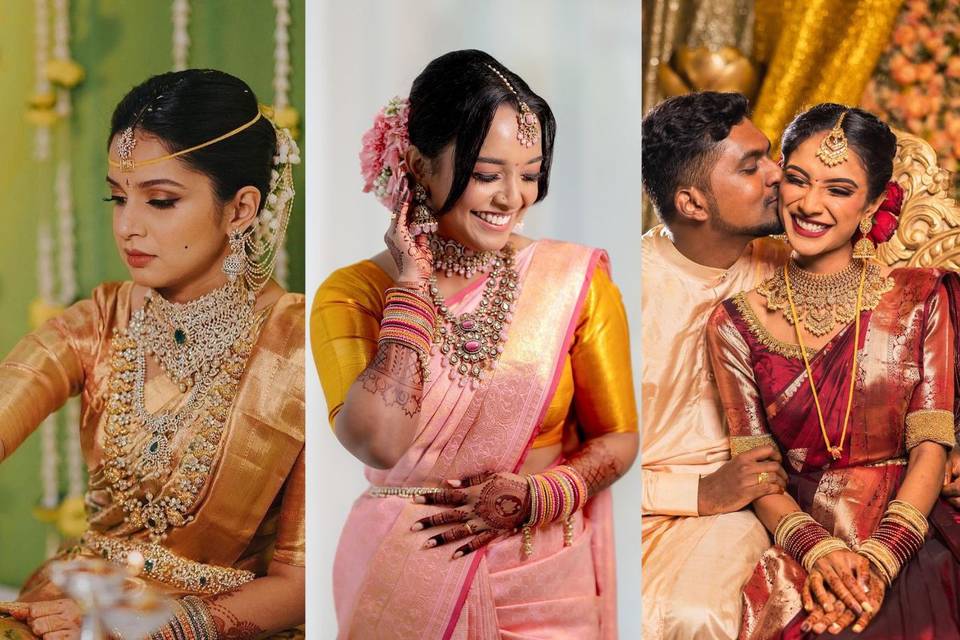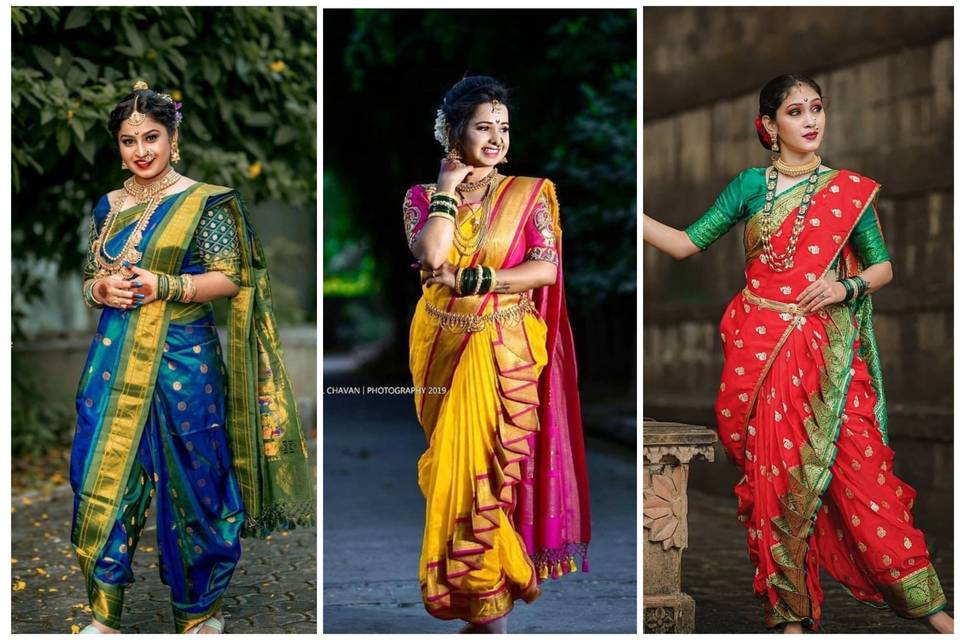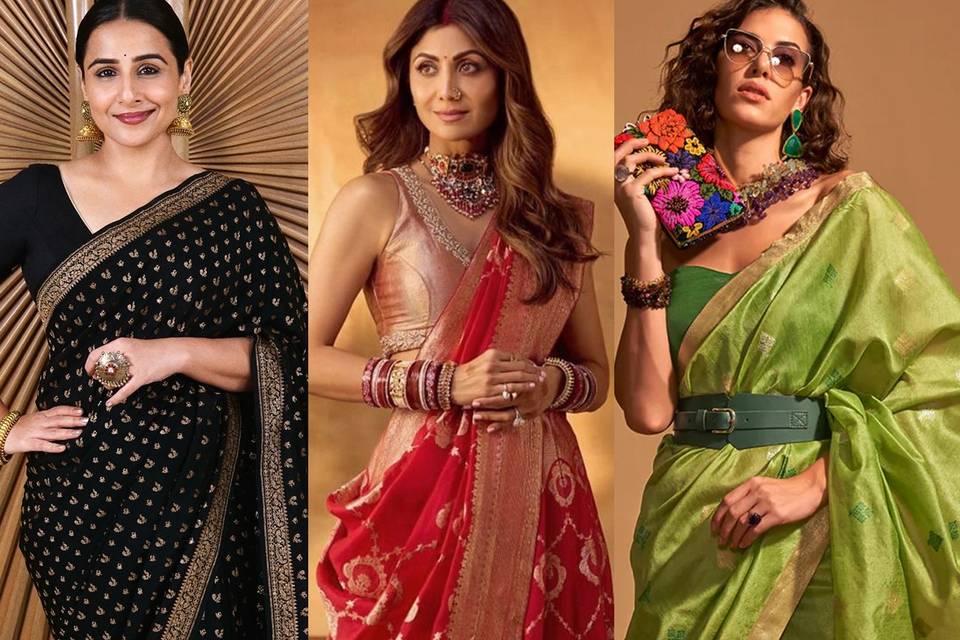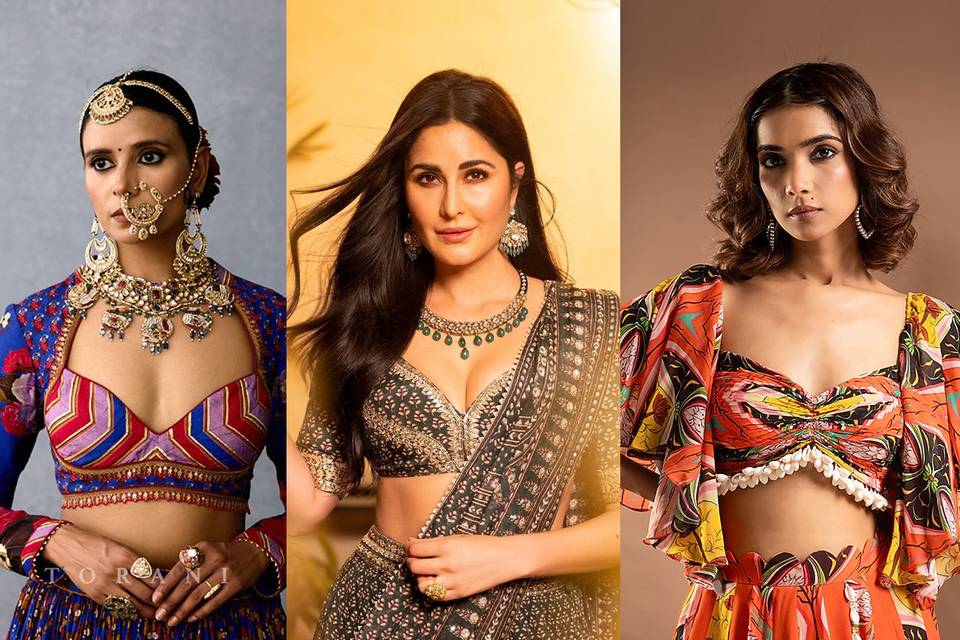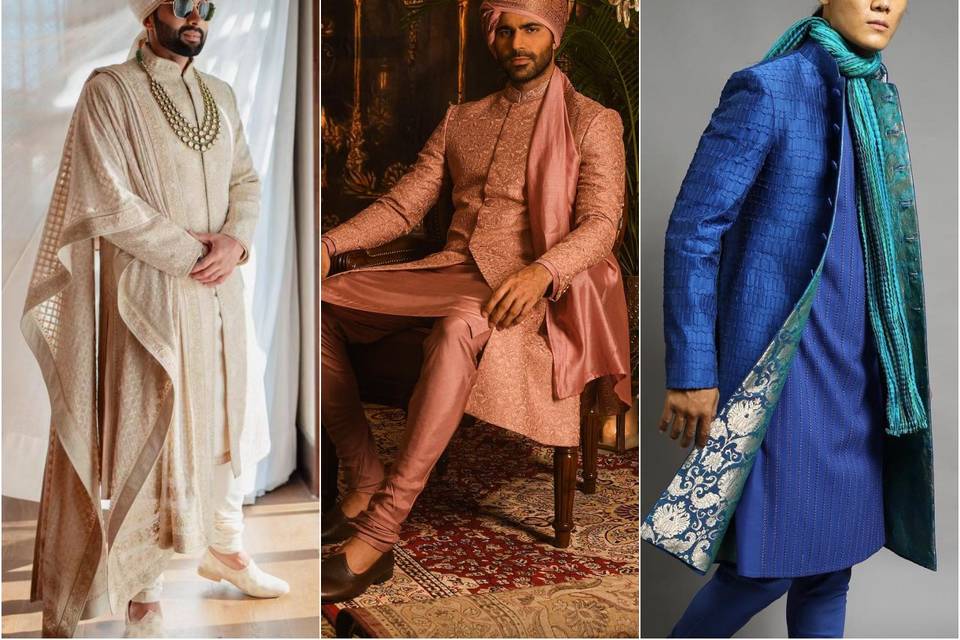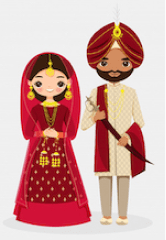The All Authentic 'How To Drape A Silk Saree' In 3 Distinct South Indian Styles
Wish for expert level perfection with your silken drape? Here's the step by step guide on how to drape a silk saree for your wedding day. Stock up on pins and accessories, please.
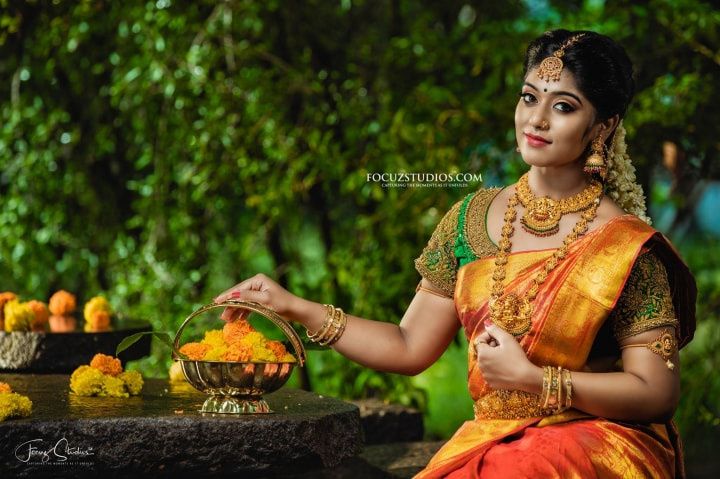
Sheer perfection! That's how a thin pleated silk saree appears on any South Indian bride. And we're here to tell you how to embody this look of absolute perfection with an answer to 'How to drape a silk saree'. Here is our answer, covering three distinct south Indian traditional saree styles - with light, breezy drapes to heavy, traditional drapes.
1. The Southern, Belted look
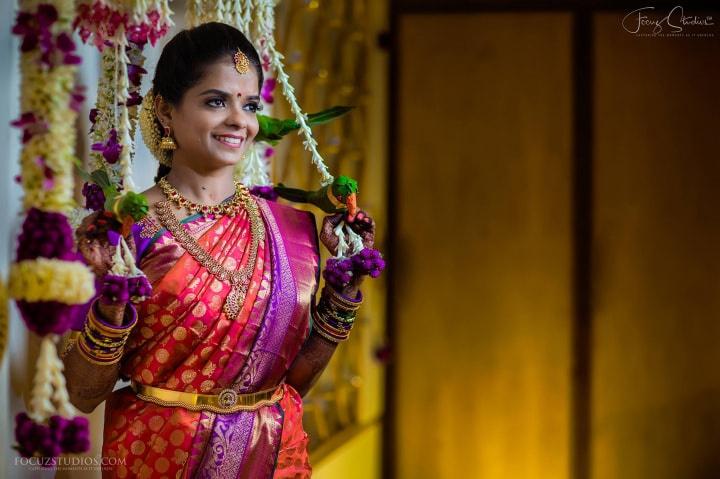
Wondering how to drape a silk saree in the typical bridal style, replete with a golden bridal belt or a kamarband? This essential southern jewellery addition to the core list of bridal accessories is meant to adorn the waist and securely hold the pallu. Here's how you can do it right!
i) Begin the twirl
Tuck one end of the saree fabric on the left side of your petticoat (or saree shaper) and take it around the back of your waist to the right-hand side of your waist). For a longer saree drape, consider twirling twice and tuck the loose end of the fabric into the petticoat or shaper band.
ii) Make the diagonal fold
South Indian silk sarees are characterised by a signature band of the saree border showing as a diagonal fold, under the thin saree pleats. That's what we do now with the loose end of the saree fabric that coming from the back to the right-hand side.
Using a pin, attach it to the front, till it is directly underneath your navel.
iii) Pin over to the shoulder
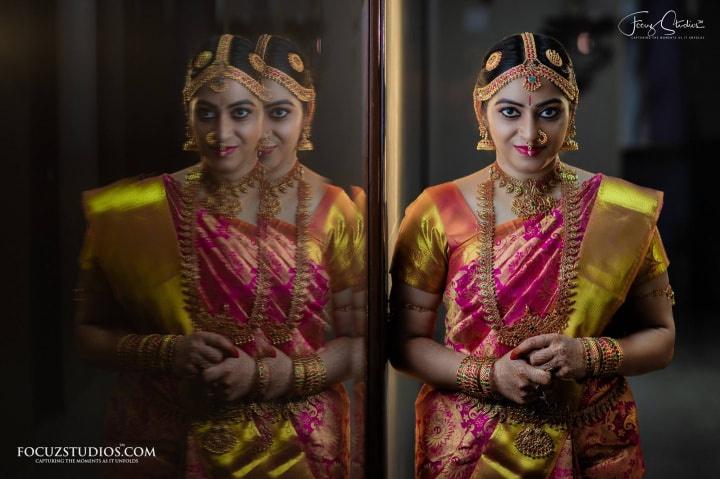
Leaving about a metre of the fabric loose from here (for the thin saree pleats), fold the remainder (from the loose end) into thin, neat pleats. Secure with an added pin. Bring this now-closed pallu, across your chest to the right side shoulder and attach it here.
Take a couple of pins more to attach to the back of your bridal blouse (through the inner lining fabric). Neaten the look with one end of the saree tucked neatly underneath the other on the shoulder.
iv) Make the saree pleats
Once the saree has been put into place, create thin pleats (about 4 inches each) with the fabric left loose at your navel. Press these pleats together (or get a friend to help), so as to give them a crisp look. Attach these pleats above the diagonal fold at the navel and secure them together with a pin as well.
v) Add your accessories
A 'How to drape a silk saree' tutorial for a traditional South Indian wedding saree is not complete without jewellery. So, this is the time when you don all of your pieces, especially the bridal belt, to secure and hold it all together.
2. Kanchipuram Khari saree
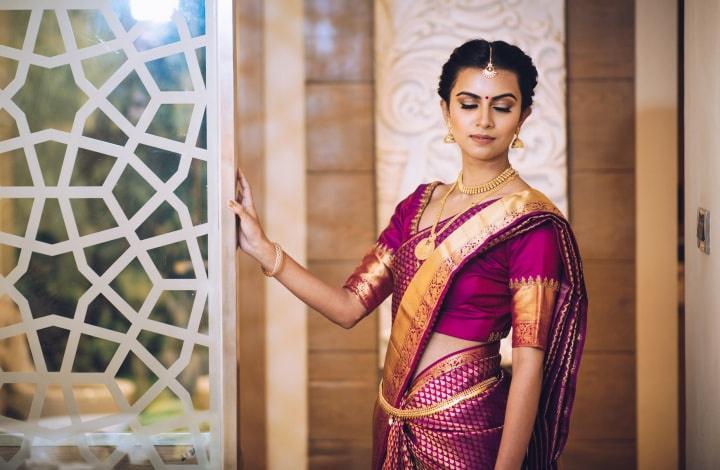
The Kanchipuram Khari stands a little distinct from the regular bridal silk saree because of the slight shift in the pleats. The pleats are made and lie to the left of the navel, rather than directly under it. Here's how to drape a silk saree in this distinct style.
i) Twirl around twice
Instead of a single wrap of the saree fabric around your waist, opt for two as these delicate silks are longer than their North Indian partners. Tuck the loose upper end in your petticoat and pin the loose fabric to your left, leaving a sizeable chunk unspooled for pleats on the floor. You're ready to begin your journey. Keep your pins handy.
ii) Pleat the saree pallu
Here, we begin by pleating the saree pallu into folds that are about 4-5 inches in width to dangle behind you. Secure the end of this saree pallu with a pin and smoothen it all together between your fingers to stiffen the fold.
iii) Pin to your shoulder
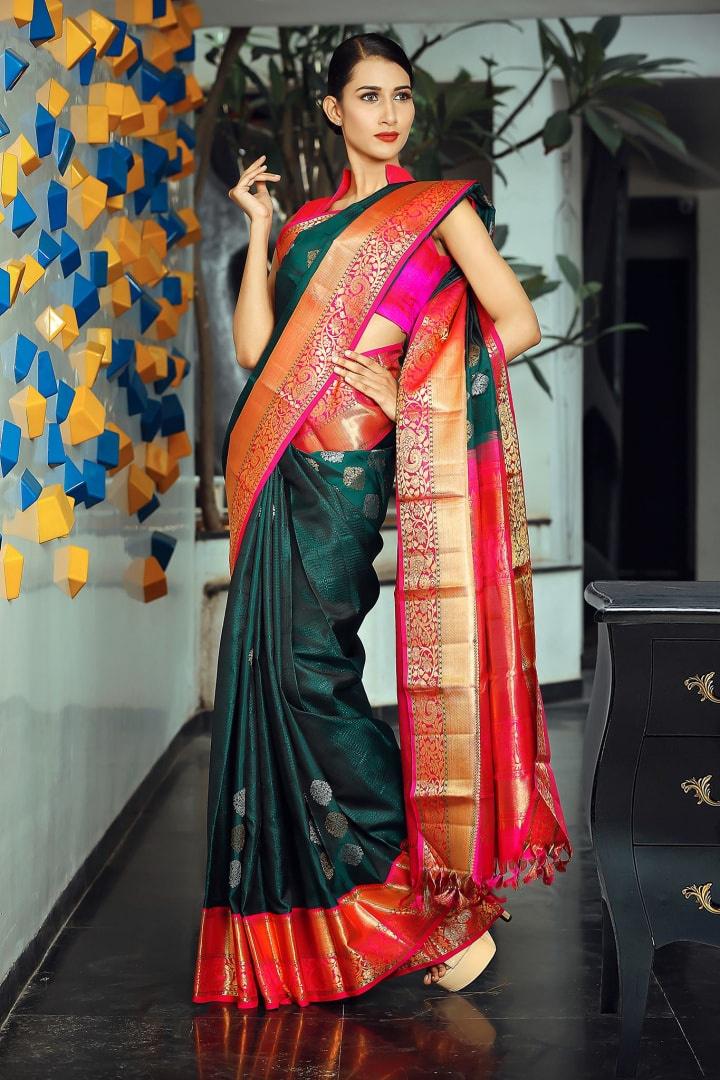
Instead of taking the folded saree pallu across your chest directly, bring this one from behind your back, to your left and then take it across the right shoulder. Pin it once on the shoulder and twice behind your back to get a crisp saree pallu held in place.
iv) Make the saree pleats:
Now, come back to the saree pleats and start making them towards the left side of your navel. Make a number of crisp pleats and pin them to the front. Crease the front right side of the saree a little to make these pleats stand a little tighter.
3. Madisar saree
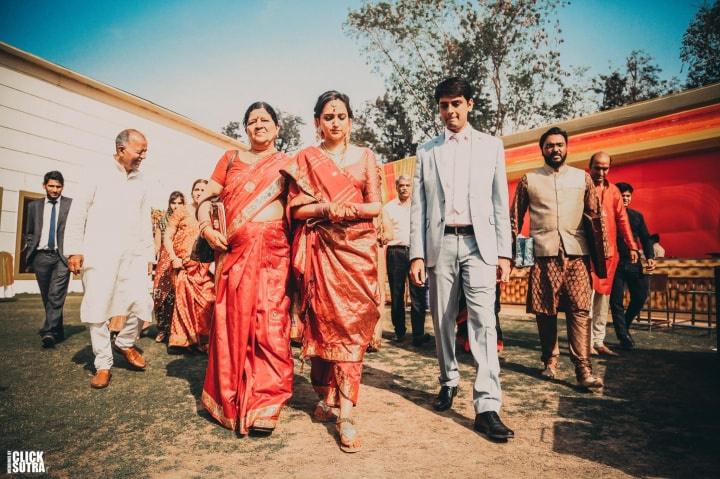
Worn in a traditional Iyer wedding, the Madisar silk drape is favoured as matrimonial wear for the community. Also called the Ardhnareeshwar drape, this is a combination of a Dhoti and saree all in one.
Here's how to drape a silk saree in the Madisar way:
i) Pleat it first
Holding one end of the saree in your right hand, make 8-10 small pleats (three-finger width) and then bring this set behind your back to the right side. Hold the saree border on the front side of your waist, ensuring that it does not crumble.
ii) Circle, stamp, knot
Keeping the pleated section at the back of your waist, encircle this silk saree anti-clockwise to cover this segment, leaving a little of the pleated portion visible at the back. Bring this to the front from the right side.
Then stamp the right side end underneath your left heel to hold the saree in place, while you go about tying it. Take a small portion of the saree that's now at your front and knot it into the previous fold, on your navel. Make a firm knot, as this will hold the piece together.
iii) Create front folds and tie to the back
Now, gather the remaining loose fabric and measure from the left-hand side the length of the saree which can be draped to your waist from this point. Using this as a measure, tuck the silk saree to the left side of waist, gather again and take it between your legs to your back.
iv) The Dhoti drape
Attach the end from the front of the saree to the back, letting the border fall in one straight line from between your knees to your mid-back and tuck it in.
Take a segment of this fabric (at your back) and attach to your right side, like you had done earlier to your left. Then, bring it to your front, draping it once across your lap and over to the right side shoulder.
v) Tuck the pallu in
There is no long saree pallu that's left trailing behind this saree. It's doubled with the border showing up on top and tuck it at your waist over the rest of the saree. You're done!
These three distinct styles give you a basic idea about how to drape a silk saree for a south Indian wedding. There are regional and cultural variations to these and we'll explore them later in a second part to this series.
Leave your thoughts in the comments below.

